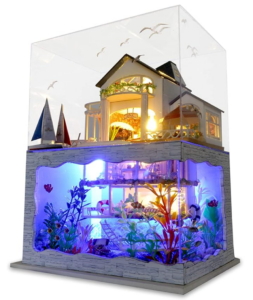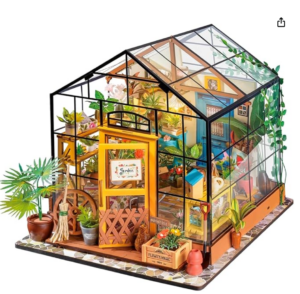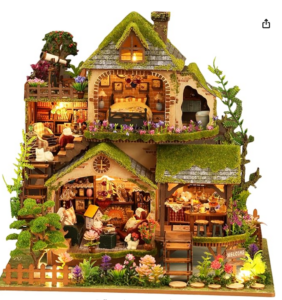Week Six: Finding Balance – The Practical Path to Sustainable Building
Emilia K -
Hi Everyone!
This week, I’ve hit a significant turning point in my sustainable home project I wanted to share. After attempting to build my model entirely from scratch, I’ve had an important realization: building completely from scratch is not only incredibly difficult but perhaps misses an essential point about sustainability in the real world.
The Reality Check
The process of creating every component from raw materials has been time-consuming and frustrating. Some systems simply don’t scale down well, and I’ve found myself spending more time on technical challenges than on the actual sustainability concepts I want to showcase. This struggle mirrors what happens in real-world sustainable building – pursuing ideological purity often comes at the expense of practical implementation.
A New Approach: Building on Existing Foundations
I’ve decided to pivot my approach. Instead of starting from zero, I’ll be using model home kits as my base and then modifying them to incorporate the sustainable features I’ve researched. This shift actually reflects a key reality of sustainable building in practice: most sustainable homes don’t start as radical departures from convention but rather as thoughtful improvements to existing designs.
HOA: The Reality
This approach also addresses another real-world consideration I hadn’t fully appreciated: neighborhood aesthetics and HOA restrictions. In many communities, homeowners associations strictly regulate the appearance of homes. As my senior project advisor told me, “The most sustainable home is one that actually gets built.” Highly visible sustainability features like unusual roof shapes or exposed systems often face resistance in traditional neighborhoods.
By starting with conventional forms and thoughtfully integrating sustainable systems, I’m mirroring what most homeowners would need to do in practice – finding the balance between sustainability and convention.
The Kits I’m Considering
I’ve identified several promising model home kits that will serve as my starting point:
- GuDoQi Miniature House Kit – Offers excellent structural basics with modifiable wall sections
- House Direct Eco-Series – Uses sustainably sourced materials and offers good scale for system integration
- Hands Craft DIY Miniature House – Provides flexible layouts that work well for passive solar design modifications



What’s most exciting is that these kits will give me a solid architectural foundation while allowing me to focus my energy on the sustainable systems that make the most impact.
While I’m changing my construction approach, I’m not compromising on the sustainability concepts. I’ll still be optimizing every aspect of the home, with special attention to:
- Orientation and Window Placement: Modifying the kit to ensure proper solar exposure, with larger windows on the south face and minimal openings on the north
- Wall System Upgrades: Adding cross-sections showing how conventional walls can be enhanced with sustainable insulation alternatives
- Water Systems Integration: Installing scaled rainwater collection systems and greywater processing that work with the existing roof structures
- Energy Systems: Adding appropriately scaled solar panels, battery storage, and geothermal system representations
The Bigger Lesson
This pivot has taught me something about sustainability that I hadn’t anticipated: sometimes the most sustainable approach isn’t starting from scratch but thoughtfully improving what already exists. In the real world, we can’t tear down every conventional home and rebuild them as sustainability showcases. Instead, we need practical, adaptable solutions that work within existing constraints.
My project will now better reflect this reality – showing how conventional homes can be transformed through thoughtful modifications rather than complete reinvention. It’s about finding the sweet spot between idealism and practicality, pushing the envelope while acknowledging real-world constraints.
Next week, I’ll share my progress with the base kit selection and my initial modifications. I believe this approach will ultimately create a more compelling and realistic model of how sustainability can be achieved in everyday homes.
Until next week!

Comments:
All viewpoints are welcome but profane, threatening, disrespectful, or harassing comments will not be tolerated and are subject to moderation up to, and including, full deletion.